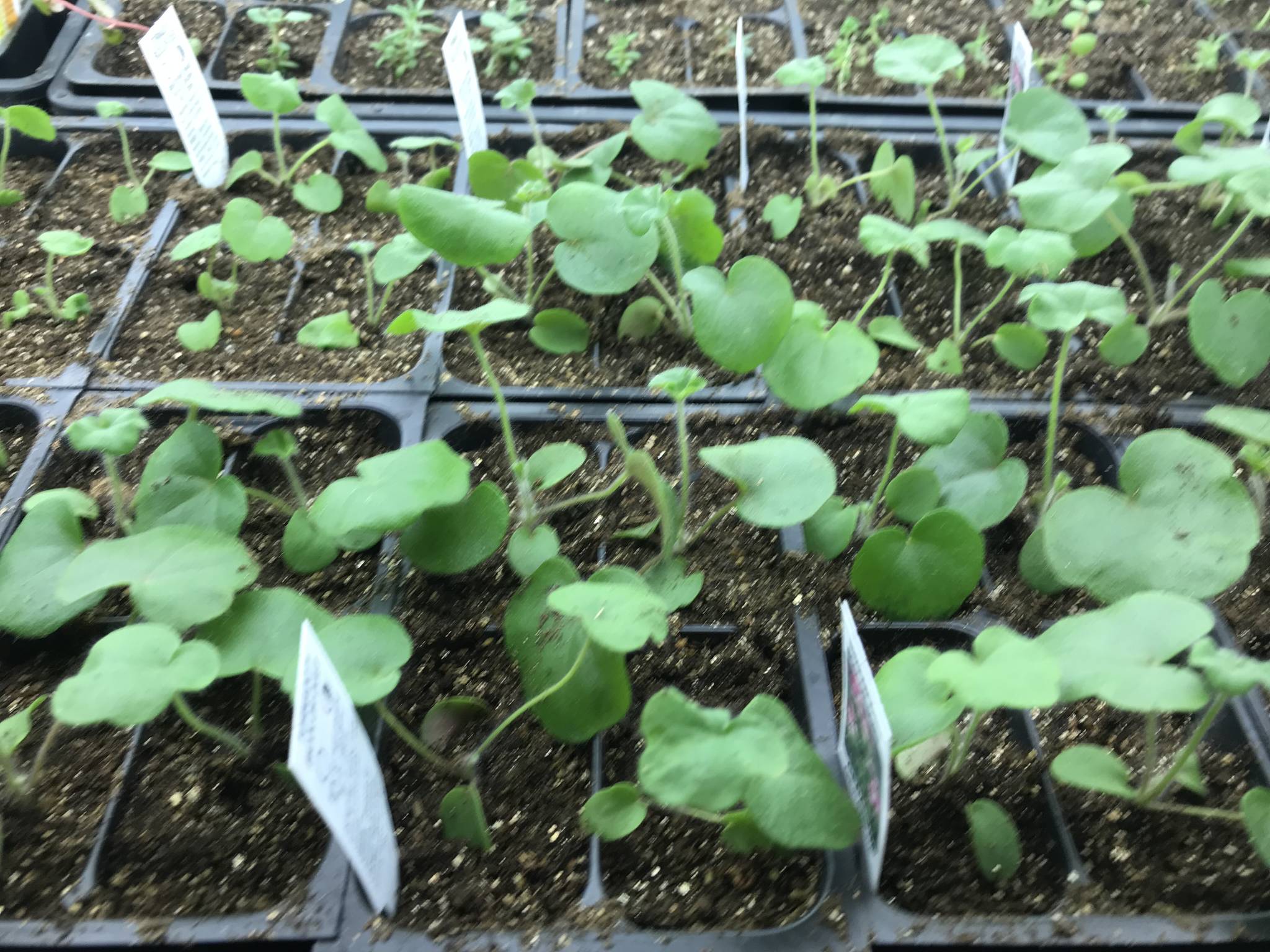I’m sorry to take the zippity-do-dah out of your step, but February is not spring and March is on its way, introducing itself either as a lion or a lamb. Its exit can be equally interesting. And — this IS the Far North. Most of us are here by choice, so get on your skis and make the most of this gorgeous weather and our lovely, groomed ski trails.
That said, it really is time for those of us who need to start seeds to get starting. I prefer to put seedlings under lights in the guest room. The alternative is a windowsill and, really, I’ve been there done that and prefer the lights. The results are strong plants that will welcome the transition to the great outdoors when the time comes. A weak, spindly seedling will struggle if not completely fail. Here’s what I have going on: three kinds of onions, shallots, leeks, artichokes, four kinds of tomatoes and lettuce. This happened last week and everything has germinated and looks quite content. Success.
Success is the key word here. Commercial greenhouse owners here in our very own town have got what you need growing under lights at this very moment. You can be assured that come spring they will have appropriate varieties, in excellent condition, just waiting for you to enter their doors and snap up what you need.
You will consult the list that you have been making this winter that indicates what it is you/your family eat. You own’t waste time, space or energy on something that no one is interested in. Go ahead and experiment but keep it to a taste until it is a proven winner.
In this garden, I’ll be making adjustments from years past. There will be more brassica (cole crops — broccoli, cabbage, cauliflower) than leafy greens. I need to concentrate on what we enjoy eating and what I enjoy growing. It’s symbiotic.
At Sunday’s Homer Garden Club meeting, market gardener extraordinaire Emily Gerrity of Twitter CreekGradens mentioned something that really struck a chord with me: how to rotate crops in this small garden of mine. Especially now that I am reducing the varieties that I grow. Her acre and a half is heavy on brassica so she has a similar conundrum. Her answer to this is plant a heavy feeder (i.e. broccoli) where a light feeder (lettuce) grew last season. This relieves some of my guilt.
Compost has been the key to a successful garden. There are tomes written on this subject and I welcome you to read them. For me, I make a pile of garden/kitchen refuse, lawn clippings, horse manure, weeds that have not gone to seed. Give it a turn every now and then, maybe water it on those years when it seems dry. John deals with the compost quite successfully and has his own technique to get the job done. It is much more laissez faire than my method, but, hey, he’s doing it and it works. I have as much finished compost as I can use on a 3-year rotation. Everything in the greenhouse grows in straight compost. The bins get emptied every fall and refilled so they are ready to go April 1, if the air smells “right.” This little vegetable plot has been growing more than we need for almost 20 years and I have compost to thank. Start your pile.
I have also made the shift to pelleted carrot seed. In the past I have carefully picked out each and every seed and placed it exactly where I wanted it. No thinning. This is a tad time consuming so I switched to pelleted two years ago and won’t ever look back. The clay coating on the seed makes what was tiny now the size of a radish seed. Much more manageable.
Spring really isn’t all that far off. If you have never gardened or have tried and failed, give this a go. Have you picked out a spot? Do so now. Look for as much sunlight as possible, little wind, near a water source and close to your kitchen.
Rent or live in an apartment? Use containers on the deck. Make sure they have drainage holes. You can be collecting them now, no need to wait until the last minute. Be prepared. Sooner rather than later you can be relishing fresh salads, peas, radishes.
Please people — prepare to garden.
Rosemary Fitzpatrick is a longtime Homer gardener. She has been writing Kachemak Gardener since 1990.


